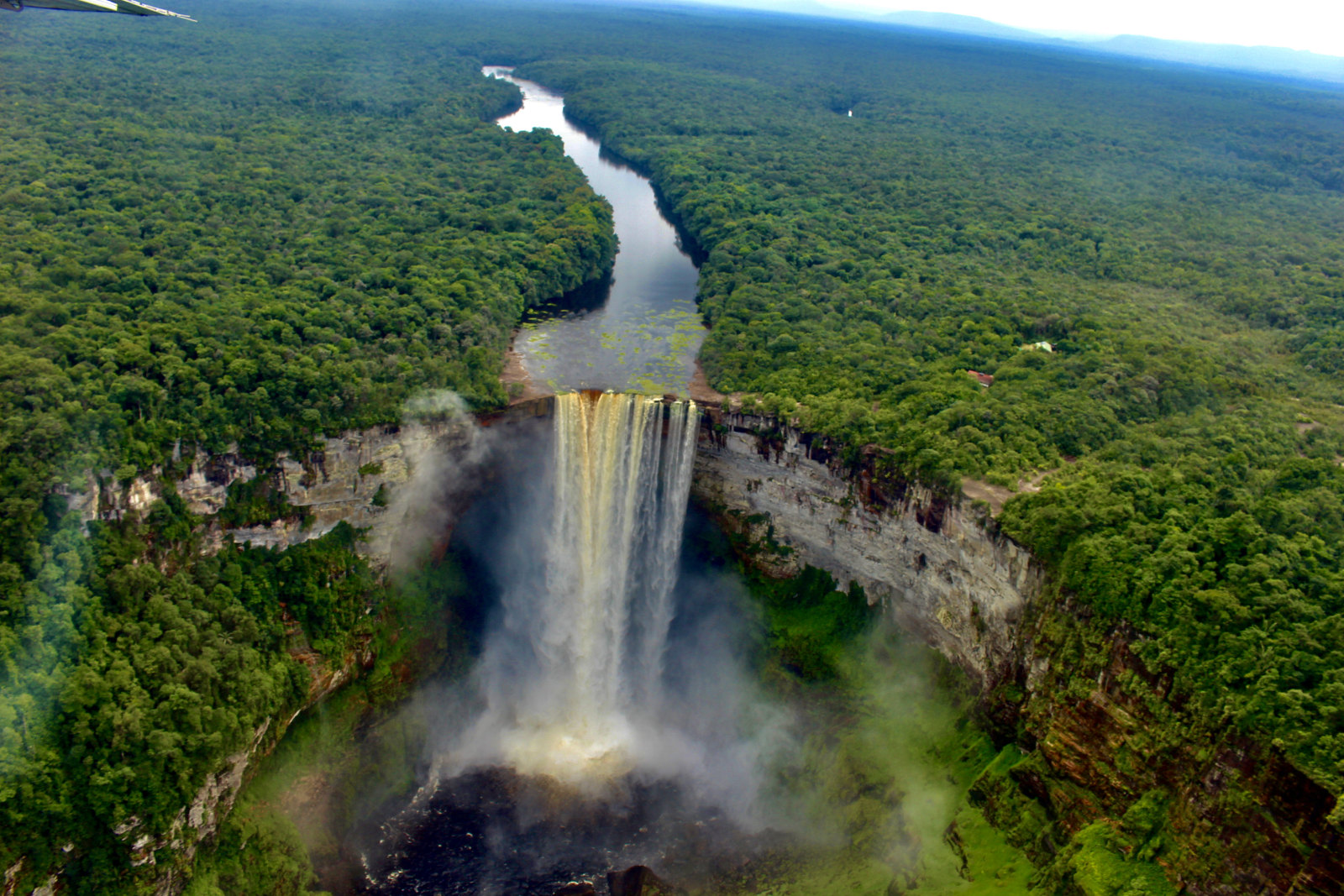
Kaieteur Falls, viewed from the air
VOLANTE Shedding its haunted past, Guyana blooms as the next rainforest destination. George Rush explores the country
Photographed by Eamon Rush
From issue 41 of Lucire
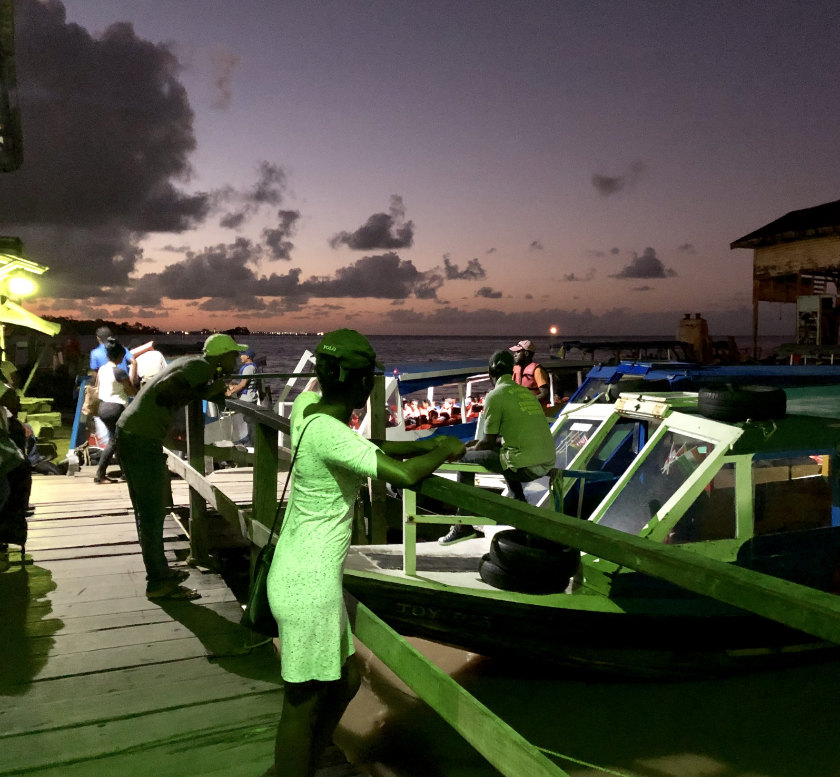
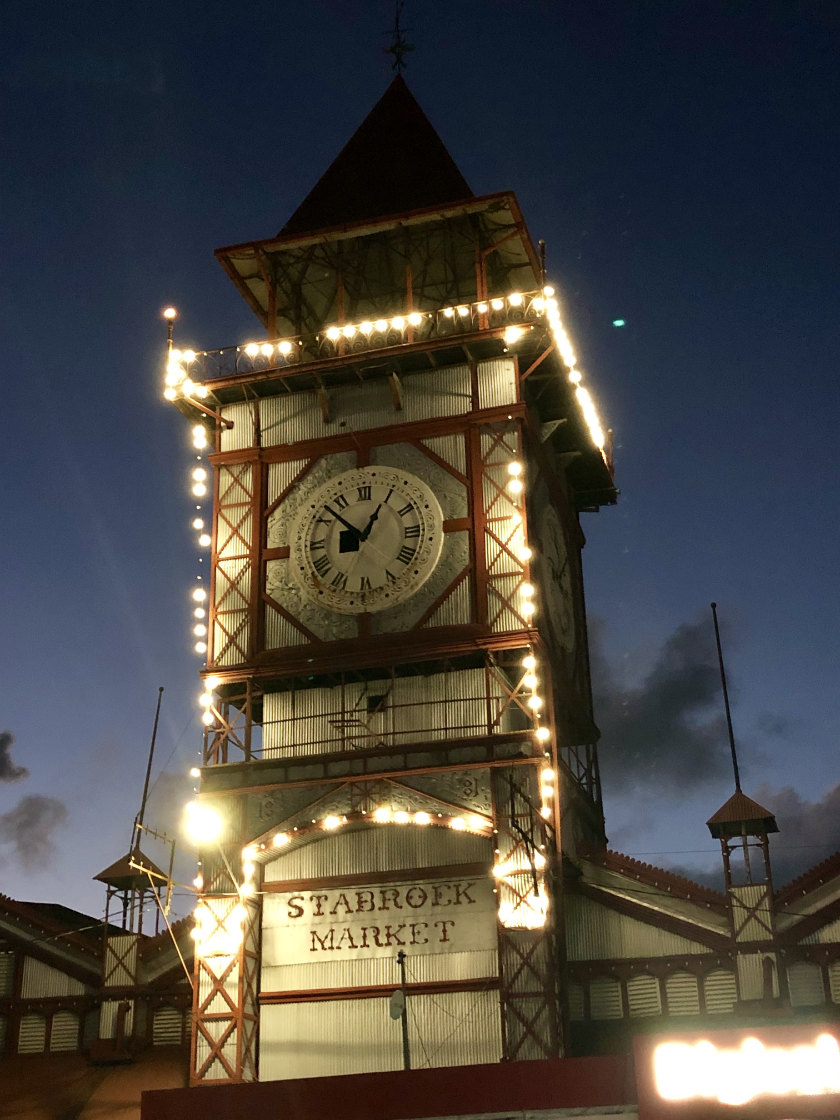
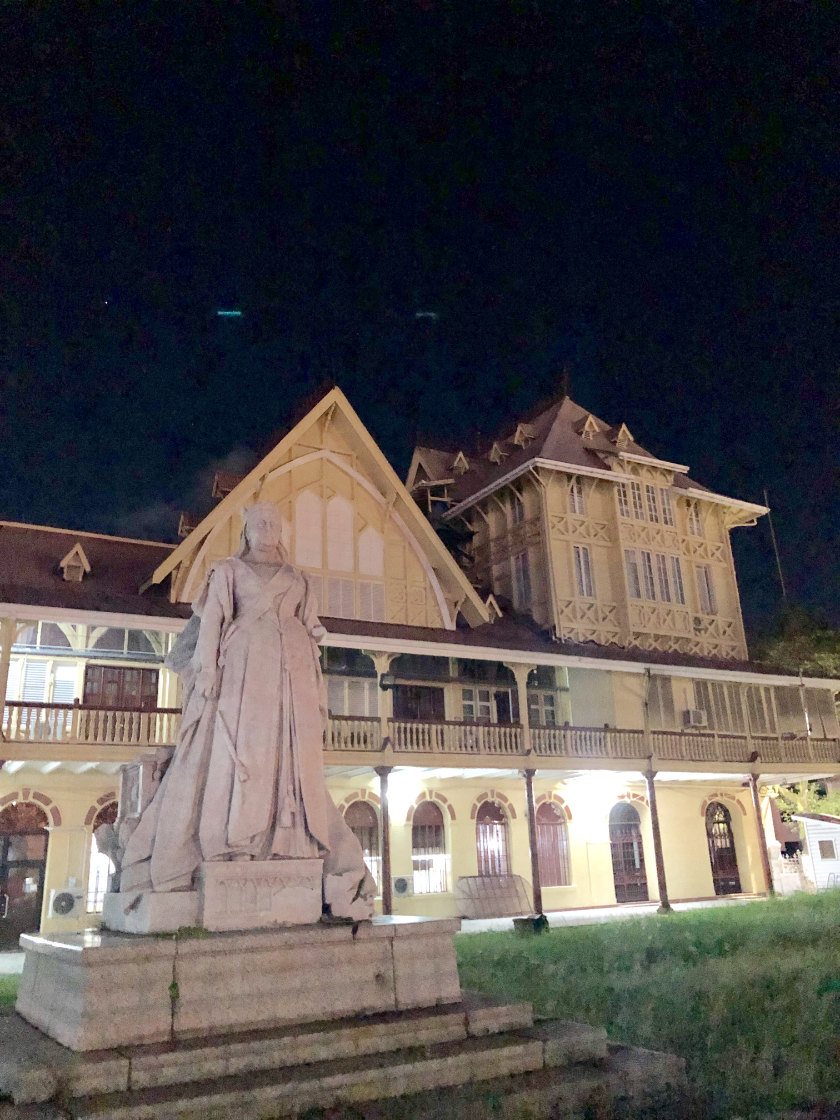
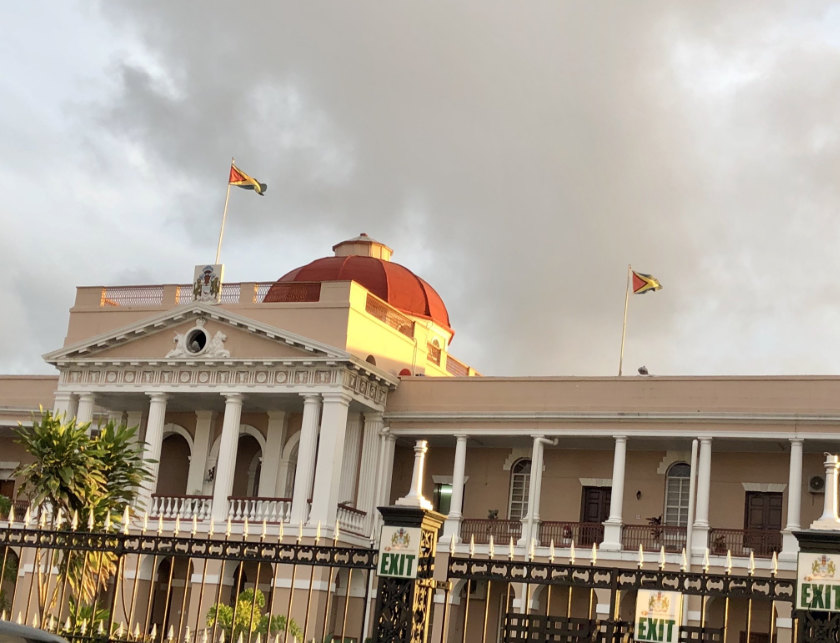
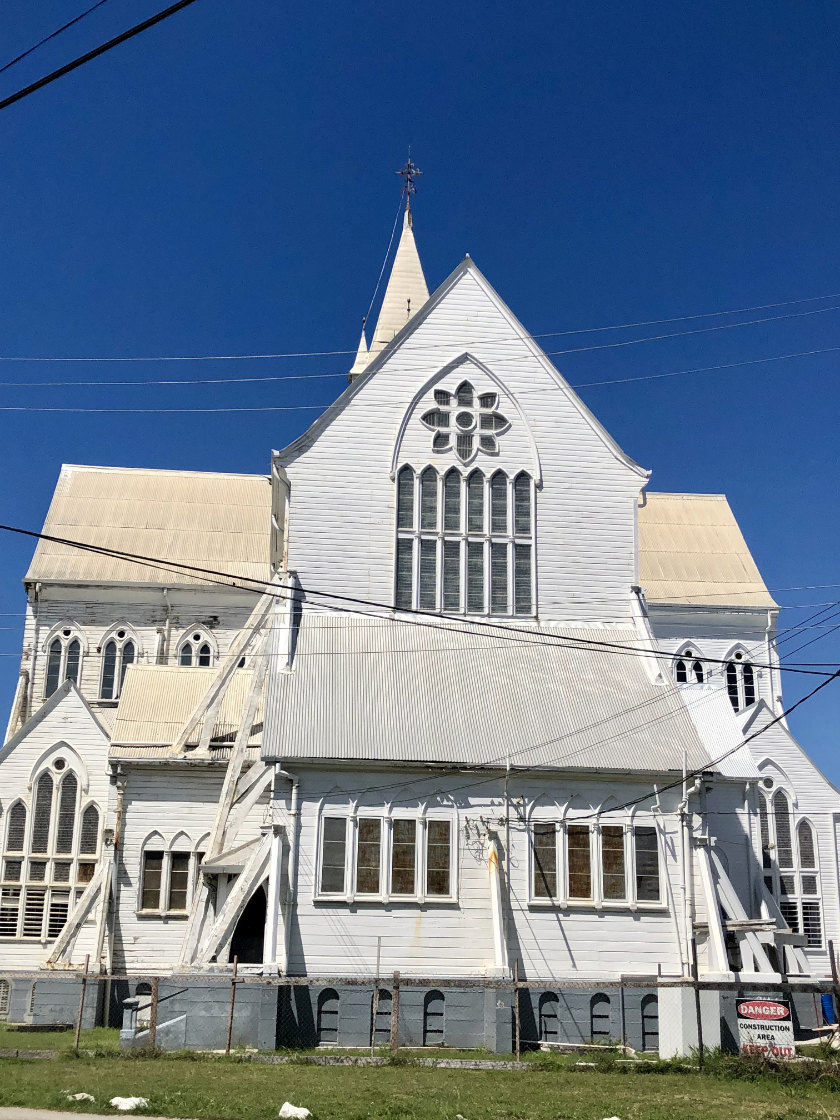
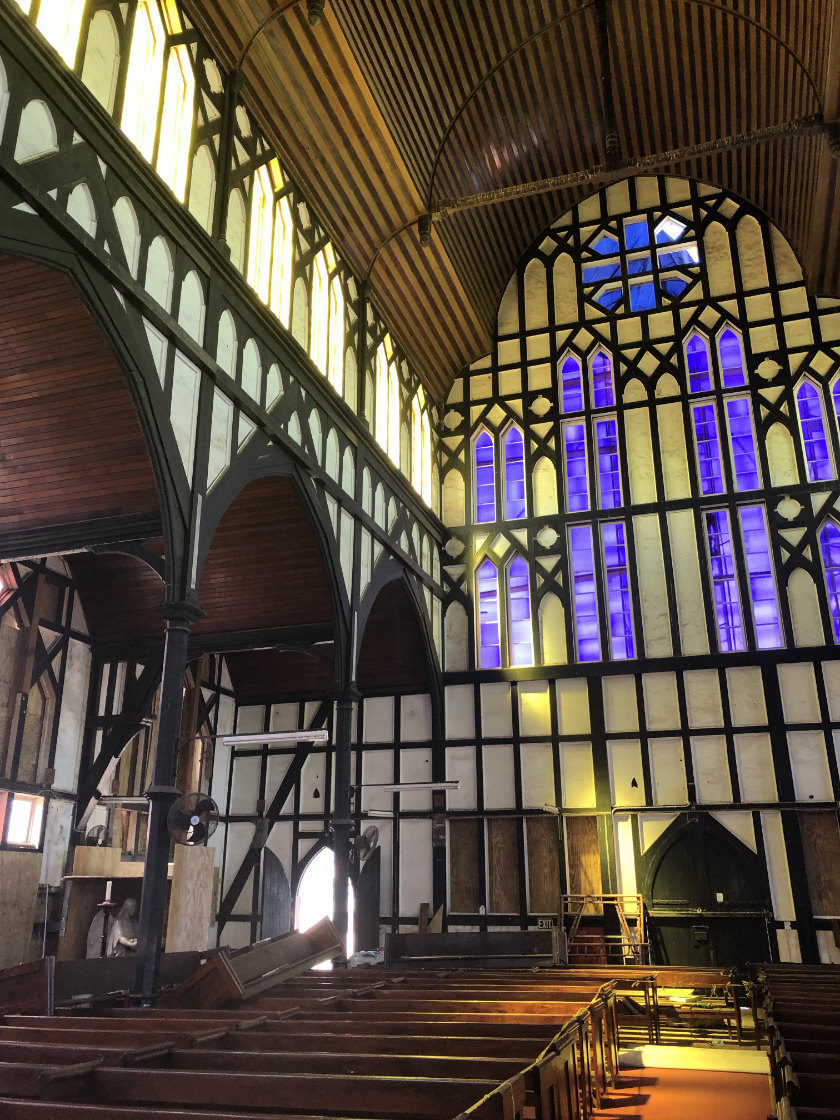 First stop, Georgetown.
Demerara River dock in Georgetown. Stabroek Market’s clock is frozen at 12.52. Queen Victoria’s statue outside the High Court. The Parliament Building in Georgetown. St George’s Cathedral. Inside the cathedral.
First stop, Georgetown.
Demerara River dock in Georgetown. Stabroek Market’s clock is frozen at 12.52. Queen Victoria’s statue outside the High Court. The Parliament Building in Georgetown. St George’s Cathedral. Inside the cathedral.
George Rush has contributed pieces to Vanity Fair, Rolling Stone, Esquire, The Wall Street Journal, Condé Nast Traveler, Men’s Journal, Departures, Travel & Leisure, and Spy, among others.
He is a guest contributor to Lucire.
Back in the ’70s, when my wife Joanna wrote for a community paper in San Francisco, she knew a charismatic preacher who invited her to join his flock on a trip to South America. His name was Jim Jones. Joanna wasn’t able to make it—fortunately, considering the horrifying mass suicide that awaited members of the People’s Temple. That was almost 42 years ago. And yet, when I told people I was bound for Guyana, some still warned me, ‘Don’t drink the Kool-Aid!’
Leaving aside that it was Flavor-Aid, I was confident that Guyana had more to offer than grim memories. In fact, Jones’s choice of Guyana underscored how long it has loomed as a promised land. Novelist Anthony Trollope, who hoped to retire there, called it the ‘Elysium of the Tropics … the one true and actual Utopia of the Caribbean Seas.’ Sir Walter Raleigh came in 1596 searching for El Dorado. Prospectors still plunge into Guyana’s emerald interior looking for gold and diamonds. In December 2019, ExxonMobil and its partners pumped crude on a rig off Guyana’s coast—the first bounty from a string of offshore discoveries that could yield more than six billion barrels of oil equivalent.
The energy jackpot promises to improve the standard of living for the roughly 800,000 citizens of South America’s second-poorest country. It remains to be seen how this boon will affect Guyana’s greatest treasure—one of the world’s largest pristine rainforests. Trees grace over 77 per cent of Guyana, with savannahs stretching across another 14 per cent. Loggers and miners are eager to exploit its 45 million acres of timber and rivers. But the country’s elected officials have publicly vowed to protect the earth’s pulmonary system. As an incentive, Norway has pledged us$250 million toward conservation there.
Guyana’s ravishing biodiversity has long lured naturalists, from Alexander von Humboldt to David Attenborough. By recent reckoning, the little nation is home to 1,168 vertebrate species and over 800 different birds. Among the superstars in the Land of the Giants are some of the world’s largest anteaters, otters, caimans, turtles, toads, river fish, and water lilies. Plus its most powerful single-drop waterfall. Guyana’s interior is also home to a species of larger-than-life human, well acclimated to adversity, and slightly mad.
While legions of wildlife enthusiasts march off on African safaris, barely 2,500 foreigners vacation in Guyana each year, according to one estimate. (That may partly explain why Guyana is currently among countries with the fewest cases of COVID-19.) Figuring that we’d better get down there before things change too much, my son, Eamon, and I flew into the capital of Georgetown. Located on the Atlantic at the mouth of the 346 km Demerara River, the port was traded between the Dutch and the French before eventually becoming the hub of British Guiana. The only South American country where English is the official language, Guyana tends to identify more with cricket-playing Commonwealth nations than with its Latin America neighbours. I couldn’t help but feel that Britannia still ruled as we checked into Cara Lodge, a white gingerbread confection that was once the home of the first Lord Mayor of Georgetown. Visiting dignitaries have included King Edward VIII, Prince Charles, and Prince Andrew.
I’d brought along a copy of Ninety-Two Days, Evelyn Waugh’s amusing diary of his 1933 trek into this country’s wilderness (and a template for his novel, A Handful of Dust). Before embarking on his ‘journey of the greatest misery,’ Waugh had strolled around Georgetown, finding that its ‘main streets were very broad, with grass and trees down the centre.’ And so they still were—plaited with canals, to drain a city that lies three feet below sea level at high tide. (One more incentive to pay attention to climate change!) Georgetown was bigger now—population: about 200,500—and probably tattier, due to a chronically depressed economy. But much of what Waugh saw remained. Well groomed colonial homes still adorned the Queenstown neighbourhood. And there was beauty even in the rundown dowagers, with their tipsy verandas and woozy Demerara shutters. Ambling past the Gothic and Tudor government edifices left by the Brits, we ran into Queen Victoria—a marble statue of her, dynamited by rebels in 1954 but later restored and returned to stand imperiously outside the High Court. I took off my hat in St George’s Cathedral, completed in 1894 and still one of the world’s tallest free-standing wooden structures. Shafts of purple and gold sunlight shot through stained glass on to marble memorials to planters and generals. The cathedral was undergoing renovation—a promising sign that international debt relief and democratic reforms are starting to show results.
We headed over to Stabroek Market, dominated by a rusted iron building whose 1881 clock tower had stopped telling time years ago at 12.52. Honking minibuses inched past vendors hawking everything from cassava to brassières. The teeming crowd told the story of Guyana. The Afro-Guyanese were descended from the slaves who’d first worked the plantations. The Indo-Guyanese were descended from indentured labourers who’d come from India to replace the slaves after the 1834 emancipation. After World War II, the two groups banded together to wrest power from the British. In the 1960s, they splintered into rival political parties that continue to vie for power. Here in the market, though, everybody just seemed to be looking for a deal—bargaining in the same rapid-fire Creole. Rastas and ladies in saris bobbed down the street as mobile discos blasted reggae and chutney (a curried version of soca music). Food trucks (including the Obama Fish Shop) did a brisk business. ‘Mango, tamarind, soursop,’ cooed a juice-squeezer with a Barry White baritone. ‘You won’t believe how cold these drinks are. Yeah, you know you want it!’ My 20-year-old son’s shoulder-length hair and hipster beard provoked some double-takes. Several passers-by proclaimed, ‘It’s Jesus!’
‘Out you come, you little horrors!’
Georgetown offered some nearby beaches and a few small museums (one devoted to the steel drum). But the country’s main attractions lay deep inland. To get there we boarded a twin-propeller Beechcraft pointed south. Looking out my window, I began to grasp the breathtaking size of Guyana’s green wealth. For most of the one-hour flight, we saw nothing but treetops, parted only by the 1,010-mile Essequibo River. Small wonder that the eerie remains of Jonestown were reclaimed long ago by the jungle. Eventually, the forest below gave way to a sprawling savannah. This was the Rupununi, a 12,950 km² region stretching from southwestern Guyana to northeastern Brazil.
We landed in Lethem, the dusty junction of this storied frontier. Back in 1969, Lethem witnessed the Rupununi Uprising, in which ranchers and Amerindians dissatisfied with the government tried to secede from Guyana. Seven people died in the three-day struggle before the army restored order. Things have calmed down since then. Brazilians cross the bridge daily from Bonfim to shop at a string of Chinese-owned discount stores. But Lethem’s red-clay streets still have a Wild West air. Barefoot cowboys—vaqueros—ride their horses into town for beer and supplies. Come Easter weekend, they compete in a rodeo that ropes in visitors from around the country.
Bullet holes from the Uprising still stipple buildings near the airstrip. Greeting us at the runway was Melanie McTurk, the ebullient lady who runs Karanambu Lodge with her husband, Edward. Melanie introduced me to Jeremy Melville, who offered to give us a lift to the lodge in his savannah-scarred Jeep. The drive took us over grassland brightened by December’s ‘cashew rains’, past termite skyscrapers, and through villages of the Macushi, one of Guyana’s nine indigenous tribes. Oh, we also found El Dorado! Walter Raleigh had come here looking for the fabled city of gold on ‘Lake Parime’. It’s now believed that Parime was a seasonal lake, known as Amuku, which disappears in the summer, leaving a shimmering expanse of golden dried grass. Clearly, someone had been pulling Sir Walter’s pantaloons.
After two hours of driving, we arrived at Karanambu, a half-dozen simply furnished cabanas—known locally as benabs—on a property running along the Rupununi River. Edward ‘Tiny’ McTurk, born into one of British Guiana’s prominent families, had come here with his wife, Connie, in 1927 to establish a station for collecting Latex tapped from the balatá tree. The McTurks chose a spot that local people believed to be cursed. For whatever reason, the demand for balatá fell off. So the McTurks turned to raising livestock. They also began taking in the odd traveller. Among their early visitors were young naturalists—including Attenborough and Gerald Durrell—who tapped Tiny’s knowledge of flora and fauna. The McTurks’ son, Mickey, carried on the ranching. Their daughter, Diane—after a flirtation with acting at Oxford and a brief marriage—carried on the hospitality.
continued below
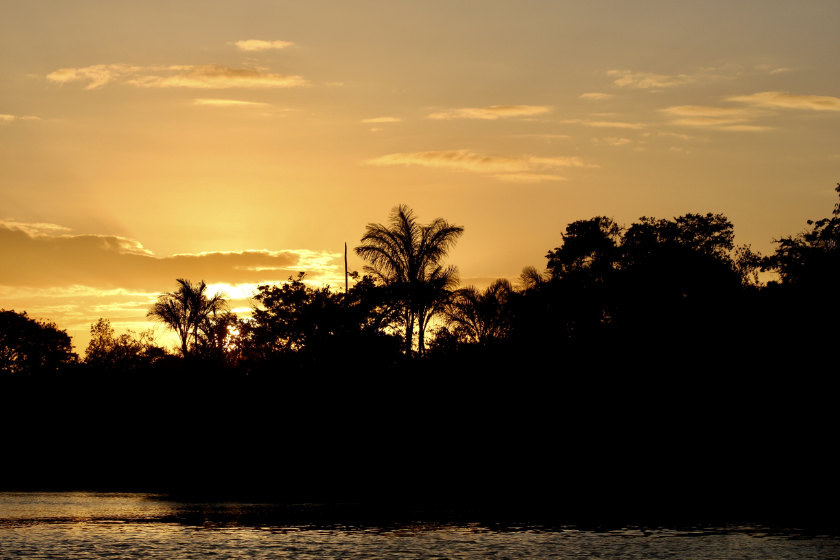
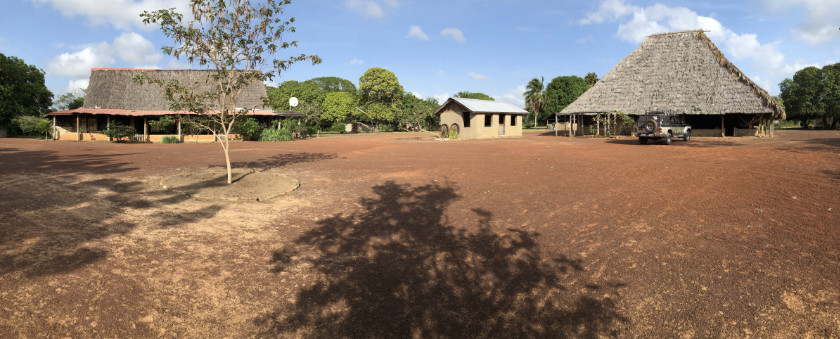
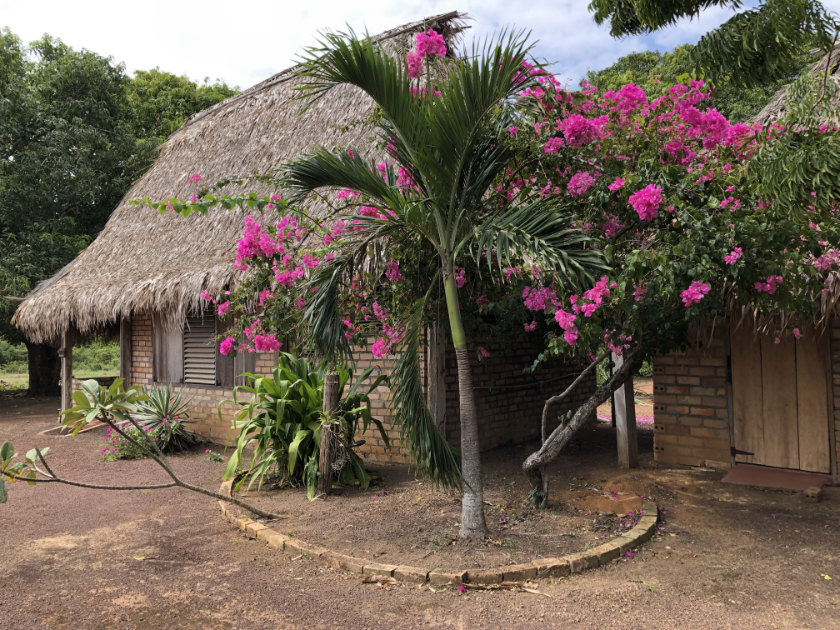
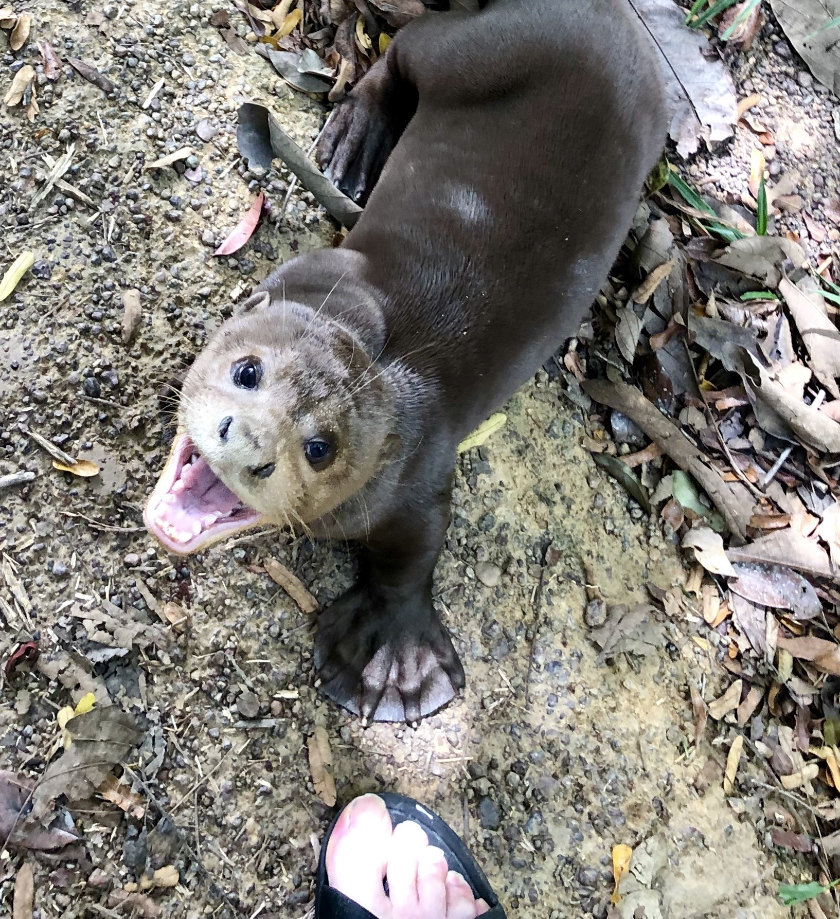
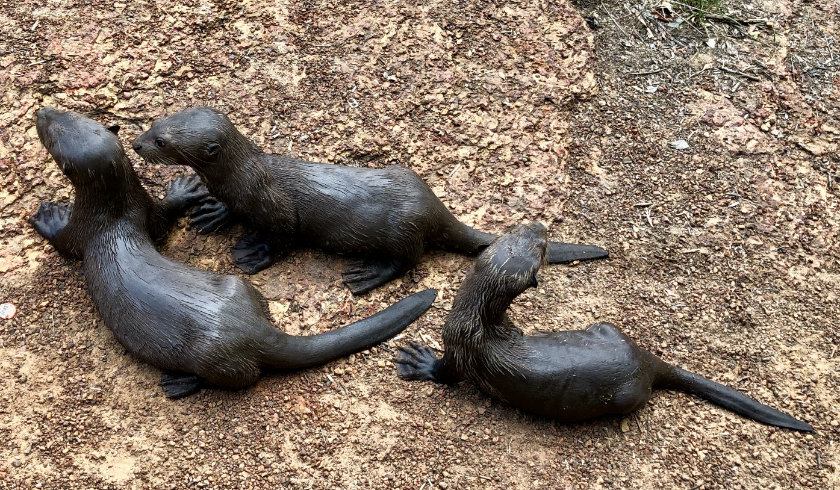 Above, from top: Sunset at Rupununi River. Karanambu Lodge. Bouganvilla cabana at Karanambu Lodge.
A smiling otter looks up.
Otter pups, Sandy, Duane and Pat, on the McTurk property.
Above, from top: Sunset at Rupununi River. Karanambu Lodge. Bouganvilla cabana at Karanambu Lodge.
A smiling otter looks up.
Otter pups, Sandy, Duane and Pat, on the McTurk property.
Besides welcoming tourists, Diane also opened her arms to giant river otters. Her long romance with these ‘river dogs’ began one Christmas when a family friend gave her two orphaned pups.
‘Auntie D named them Frankincense and Myrrh,’ said Melanie McTurk as we shared Guyanese-style moussaka in the lodge’s soaring main benab. ‘Frankie ended up utterly spoiled. Auntie D said he didn’t know he was an otter. He slept in a hammock. He had tea with the family. He expected to be carried to the river, even though otters can grow to almost six feet.’
Diane came to know the threats otters faced: poachers who wanted to sell their sleek pelts; fishermen who saw them as rivals; and other otters. ‘Male otters are like lions,’ Melanie explained. ‘They will kill offspring that aren’t their own.’
Diane encouraged locals to bring her abandoned pups. Relying on her instincts, she taught the pups to fish, and, once they were grown, she sent them into the wild. Conservationists—as well as TV crews from National Geographic and Animal Planet—came to study how she did it. Others came as much to study the gloriously eccentric Diane. ‘Auntie D was a force of nature,’ laughed Melanie, who remembered her getting on smashingly with Mick Jagger. (One of Diane’s otters was a bit snappish with his girlfriend, L’Wren Scott, perhaps believing the fashion designer was a fan of fur.)
In 2016, Diane passed away at the age of 84, having raised about 60 otters. Her rescue programme goes on. Melanie brought me to a nearby stone shed. As she unlocked the door, I heard squeals shrill enough to make a cat wear earplugs.
‘Out you come, you little horrors!’ Melanie said.
From a water-filled basin sprang three bewhiskered otter pups. Each was about three months old and three feet long. Their fur glistened like liquid chocolate. They sniffed the hands of the three Macushi kids who looked after them.
‘They’re looking for food,’ Melanie said.
We all walked toward the river. The pups—Sandy, Duane, and Pat—led the way, undulating on their webbed, catcher’s mitt feet. I felt as though I’d stepped into a children’s book.
At the river, the kids pulled small fish out of a bucket and lured the pups into the water—forcing them to swim for their supper. After chewing up a half-dozen piranhas, the pups flopped onto their backs to guzzle milk out of baby bottles. I pondered whether I could fit one of them into my suitcase.
A sticky tongue and an overnight sex-change
The Karanambu preserve is just 640 acres but its varied terrains draw almost 200 species of birds (with many more seasonal migrants), 15 or so kinds of mammals, and in the wet season, close to 700 varieties of fish. A morning jaunt through the riparian forest introduced us to the green ibis, the cocoi heron, and the white-faced whistling duck.
On another morning, we arose before dawn and headed out in a jeep with Manny Mandook, a Macushi guide whose family has worked with the McTurks for three generations. Our quest: the giant anteater. You might think it wouldn’t be hard to spot an animal that can grow to seven feet in length. But, after searching for over an hour, I worried that, with the rising sun, these foragers might call an end to another night of slurping bugs with their sticky pink tongues, which typically measure 24 in. Finally, Manny spotted one far in the distance. I lifted my binoculars to squint at what appeared to be a vacuum cleaner dressed in an alpaca sweater. (Small wonder the anteater fascinated Salvador Dali.) We padded toward him.
‘His eyesight is poor,’ said Manny, ‘but he has a keen sense of smell.’
Sure enough, even though we were several hundred feet away, his snout began to twitch. Sensing us, he took off. He was fast. We jumped back in the Jeep, catching up with him downwind. As we gazed at this mesmerizing creature, Manny told us how nearby villagers had long killed anteaters because they believed the animals could turn into deadly spirits.
‘I spent almost two years trying to convince them it wasn’t true,’ he said. ‘I told them, ‘Tourists will come to see the anteaters!’ They said, ‘The whites will take our land!’ I said, ‘No, they’ll pay you!’ Finally, I brought some tourists, who spent a bundle. Now the village specializes in anteater tours.’
In the afternoon, I took a swim at a bend in the river that, Melanie assured me, was relatively free of piranhas. According to Macushi legend, the grey ironstone banks here were once warriors whom a shaman had turned into rock—because they’d ignored his command not to feast with a neighbouring tribe. (A lesson for any party host thinking of mixing Patriots and Jets fans.)
Toward dusk, we headed downriver with Manny in a skiff. Gliding through mangrove caves, we spied black cormorants, a Jabiru stork, a boat-billed heron, and an osprey picking up a take-out order of fish. We stopped at a pond decorated with Victoria amazonica. The giant water lily—named in 1837 after Britain’s new queen—has a circular pad that can reach 10 ft in diameter. Manny poured a dram of Karanambu’s famous punch—passionfruit blended with Demerara rum—as we waited for the evening’s floor show. It began when the female lily’s white flower slowly opened, releasing a butterscotch-y scent that enticed several flying beetles to land and crawl inside the petals. The beetles, wearing pollen from other lilies, would spend the night in the lily’s warm core. Once it released them, the flower, now male, would turn bright pink and, after 48 hours, die.
‘We once counted 97 beetles crawl into one flower,’ recalled Manny.
continued below
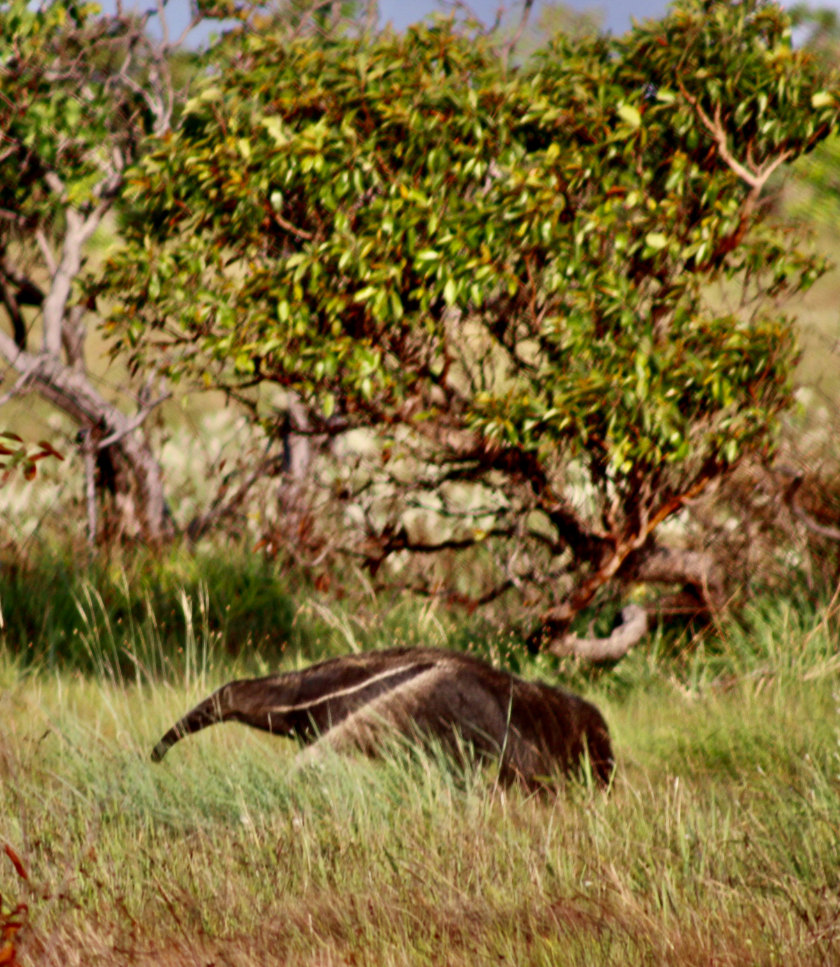
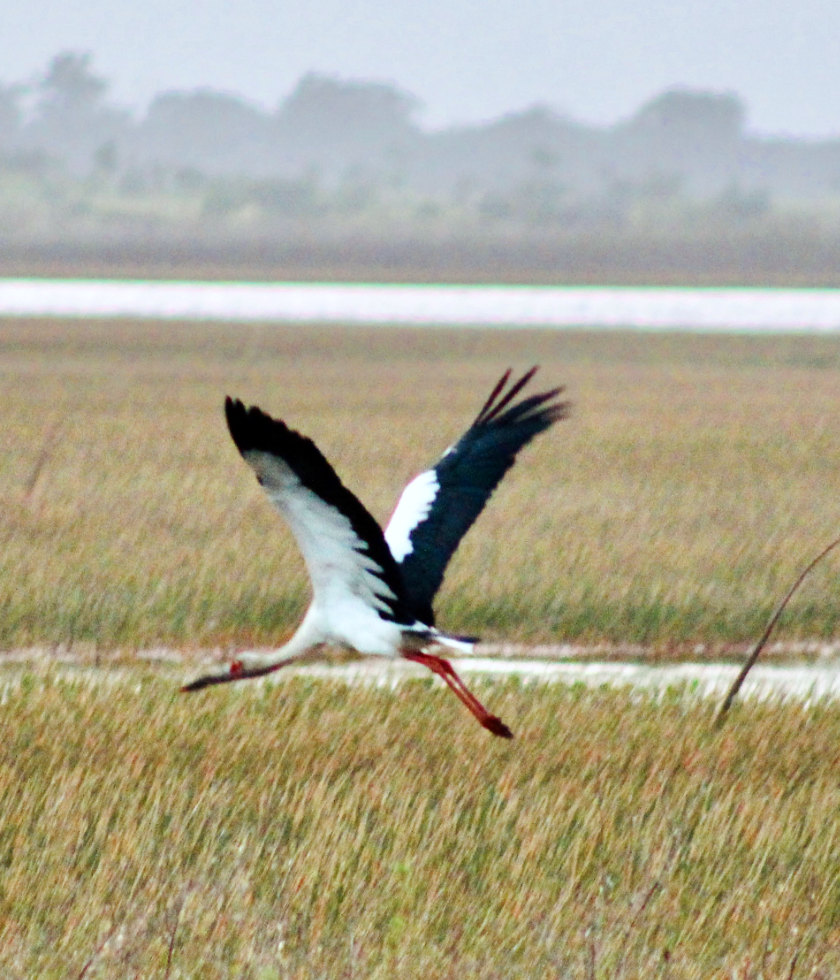
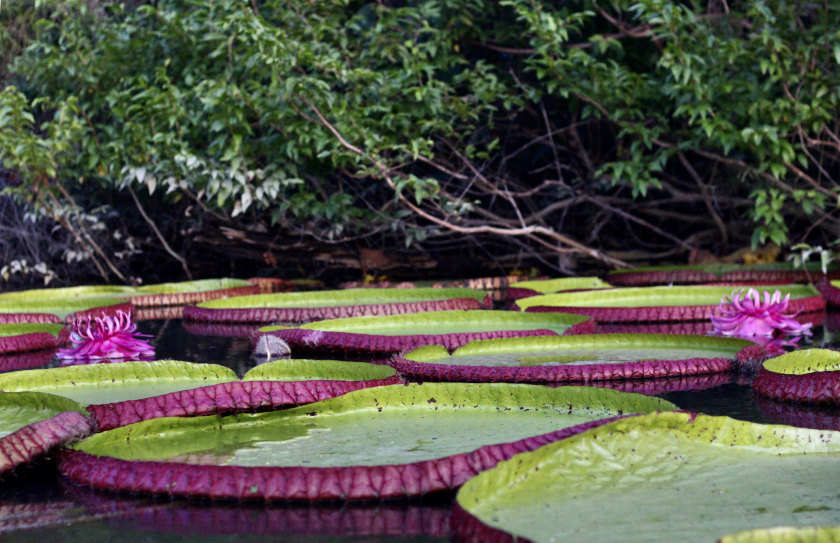
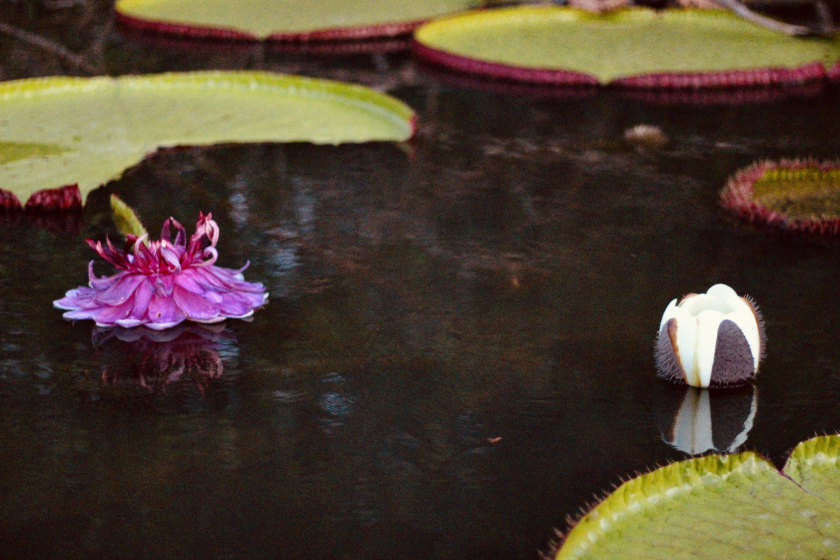
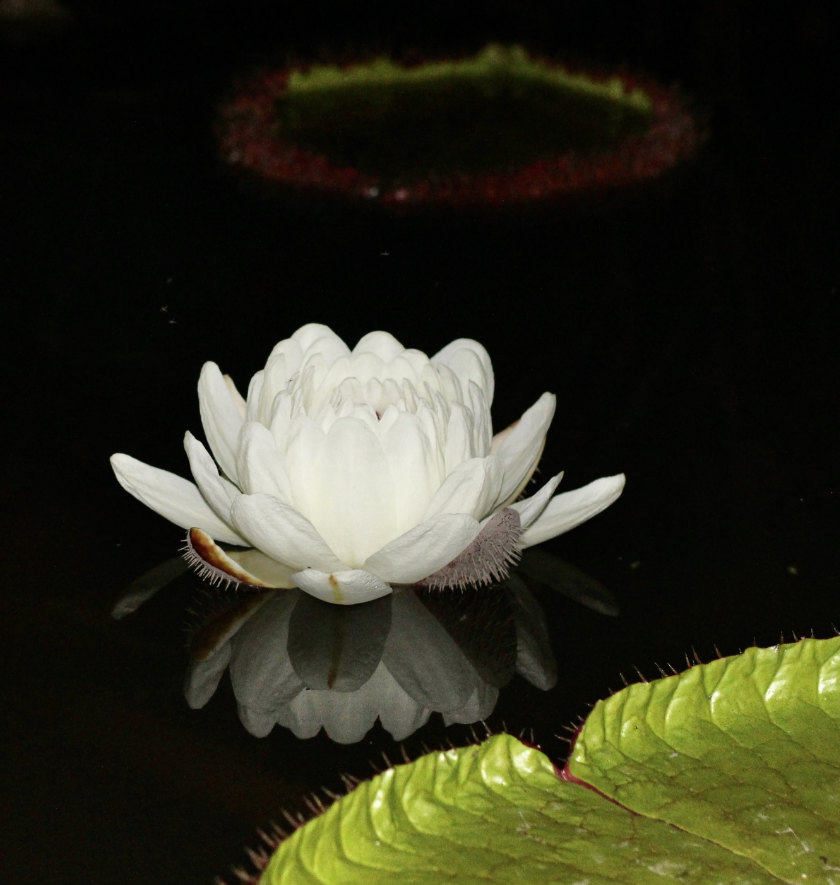
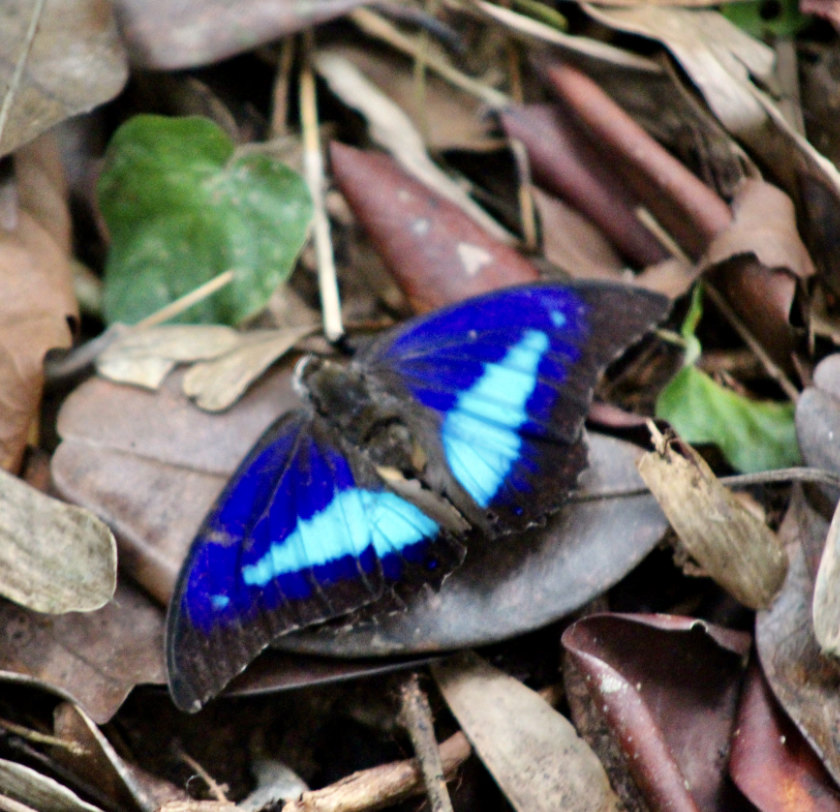 Above, from top: Shot with a long lens, an anteater on the move. A crane in flight in Rupununi. Victoria amazonica. Pink and white lilies. A white lily opens. A butterfly at rest.
Above, from top: Shot with a long lens, an anteater on the move. A crane in flight in Rupununi. Victoria amazonica. Pink and white lilies. A white lily opens. A butterfly at rest.
A full moon bloomed as the transgender spectacular unfolded. Band-tailed nighthawks wheeled overhead. As we cruised back to the lodge, Manny shined a spotlight along the river’s banks, igniting the eyes of lounging caimans.
Manny’s wife, Anita, prepared a savoury stroganoff (beef courtesy of Karanambu’s 100-plus herd of cattle), pumpkin and farina. Joining us for dinner were Jeremy, who’d driven us here, and several of his relatives. All were descended from Harvey Prideaux Collin Melville (1864–1927), a Jamaican-born Scot who had journeyed to the Rupununi to prospect for gold and, by the dawn of the 20th century, had accumulated thousands of cows on the Dadanawa Ranch, one of the largest cattle spreads in the world. H. P. C. also married two daughters of an Ataroi chief. The sisters gave him 10 children, who in turn begat many more Melvilles. In 1969, some of them helped foment the Uprising.
‘Some of the rebels are still at large,’ Jeremy said with a grin.
Their rebellion proved costly for the Rupununi.
‘The government stopped our cattle drives and slashed funding for education and public works,’ said Lissa Orella, who has also turned her family ranch, Manari, into an eco-lodge. ‘We learned to live by our wits—which we still do.’
The gathered Melvilles believed that their European–Amerindian ancestry puts them at a disadvantage in a country dominated by descendants of Africans and East Indians who legislate from the coast.
‘People of mixed race are a minority,’ Matthew Melville observed. ‘Every election year, the main political parties make appeals to us. But we feel like voices in the wilderness. We don’t see many changes.’
‘They’re small ... but tasty’
Of course the absence of change is part of Karanambu Lodge’s appeal; even the Melvilles come here to fish. The river remains its life-spring and its most reliable thoroughfare. Like a released otter, I left Karanambu by water—ferried two hours north to a landing where Manny handed me off to another Macushi guide, Lionel James.
A good-humoured, muscular man in his 40s, Lionel showed us around Surama, a forest-ringed village set in a valley. For years, its people had survived mostly through hunting and fishing and subsistence farming. But in 1996, some backpacking American students showed up and the Macushi gave them shelter. Village leader Sydney Allicock saw the possibility of taking in more tourists. With money from ngos, the Macushi started building guest quarters. ‘We all put our shoulders to the wheel,’ said Lionel. Today, the award-winning Surama Eco-Lodge is one of South America’s most successful community-run resorts. Tourist dollars have helped improve Surama’s school and clinic. Almost a third of its 300 villagers have a role in the resort. The Macushi do sometimes bring in outside entertainers: Prince Charles and, later, Prince Harry wowed the crowd with their feathered headdresses and interpretive dancing.
Toward dusk, Lionel led us into the forest. The towering trees—cedar, bulletwood, purpleheart—drew the blinds on what daylight remained. Holstering our flashlights, we stood silently in the blackness and listened to the cantata of insects, frogs, and birds. I felt a bat flutter by. A howler monkey roared in the distance. Whenever there was a lull, Hollywood’s favourite jungle bird, the screaming piha, added a screech to the soundtrack.
After a dinner of Macushi-raised chicken, cassava, and squash, we searched for our thatched benab. Fortunately, each plank cottage was decorated with a different mural. The strapping warrior on our door graciously granted us entry.
In the morning, my sleep was obliterated by what sounded like a half dozen species of chattering birds. I later learned that there was only one guest on this talk show—the yellow-rumped cacique, a brilliant impersonator that can even mimic a car horn. Dragging myself to the dining area, I found some khaki-tufted bird-watchers crowing about the swifts, swallows, woodpeckers, gnatcatchers, potoos and cuckoos they’d spotted before dawn. Some of them had turned quite aggressive—cackling and puffing out their chests. And by ‘them’, I mean the birders.
Lionel was already waiting to take us on a trek up Mt Surama. We set out across the savannah and into a forest where every plant seemed to cure something. Lancing an aramata tree with his machete, Lionel offered a sniff of its acrid bark.
continued below
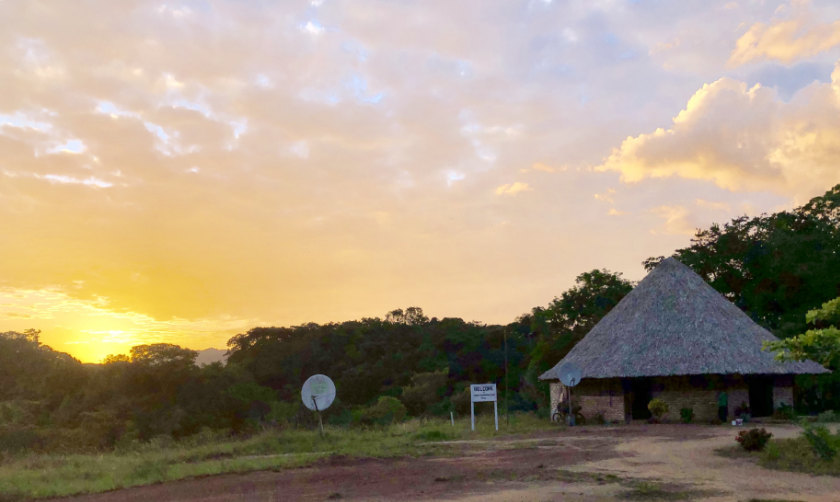
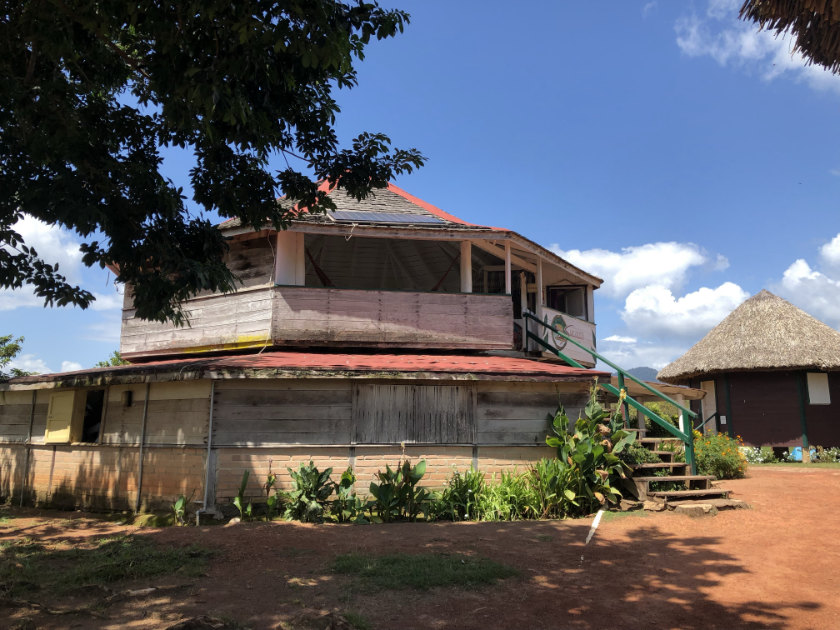
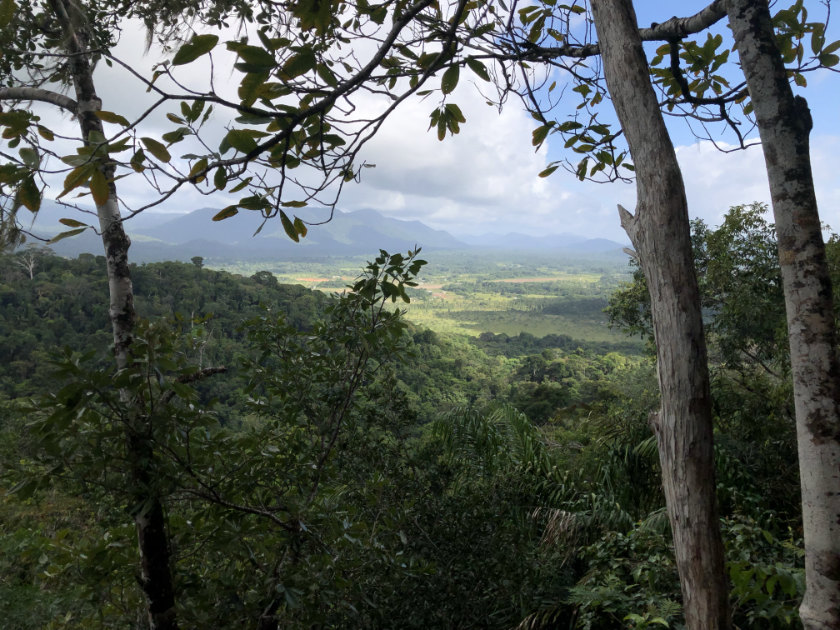
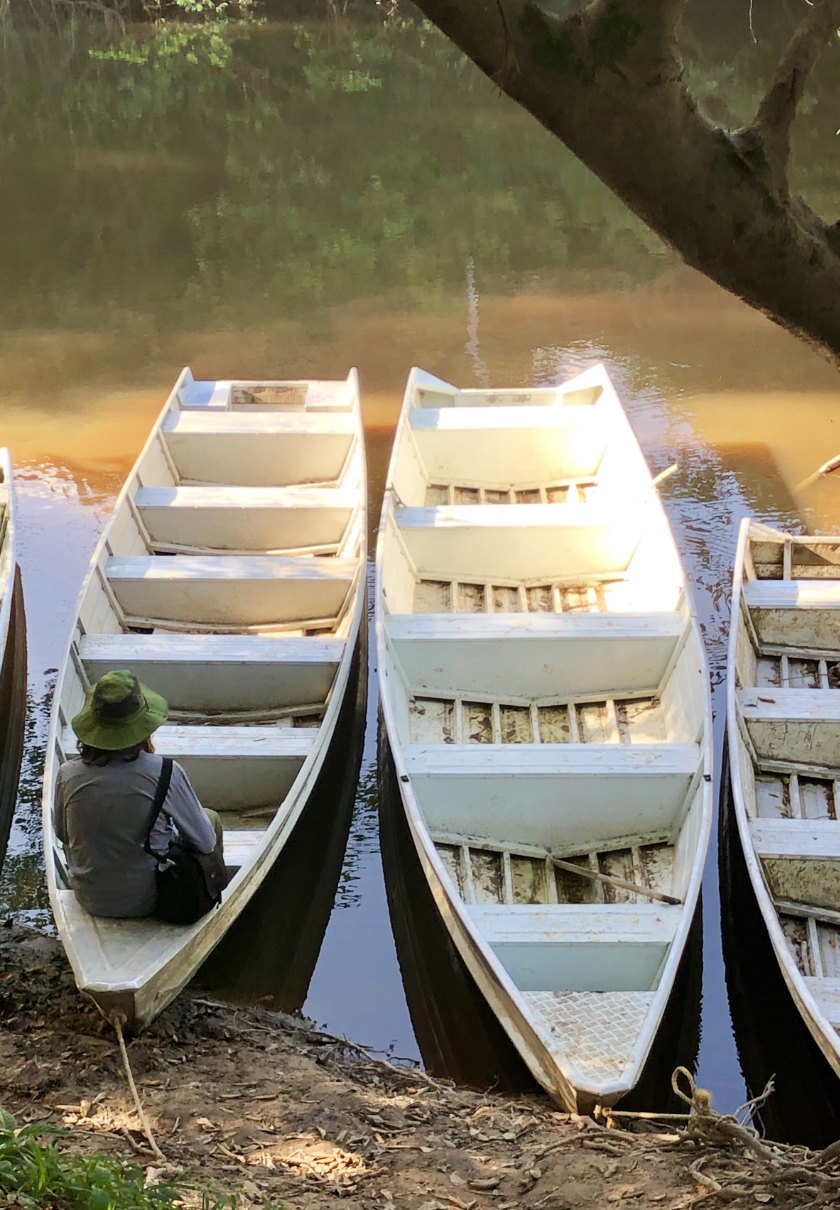
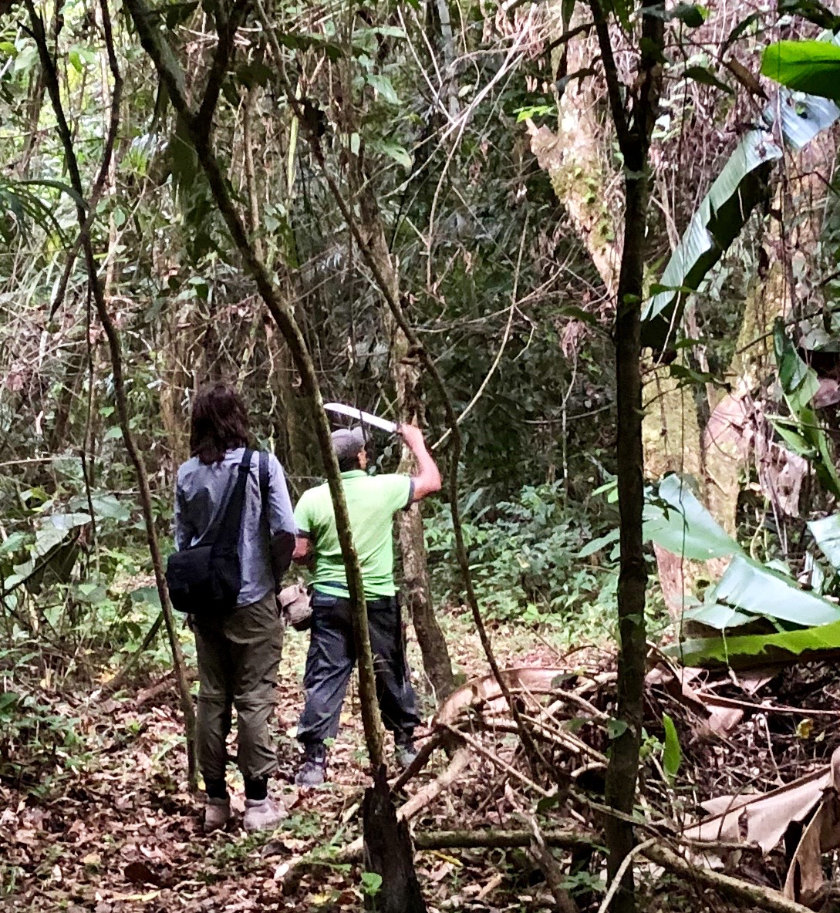
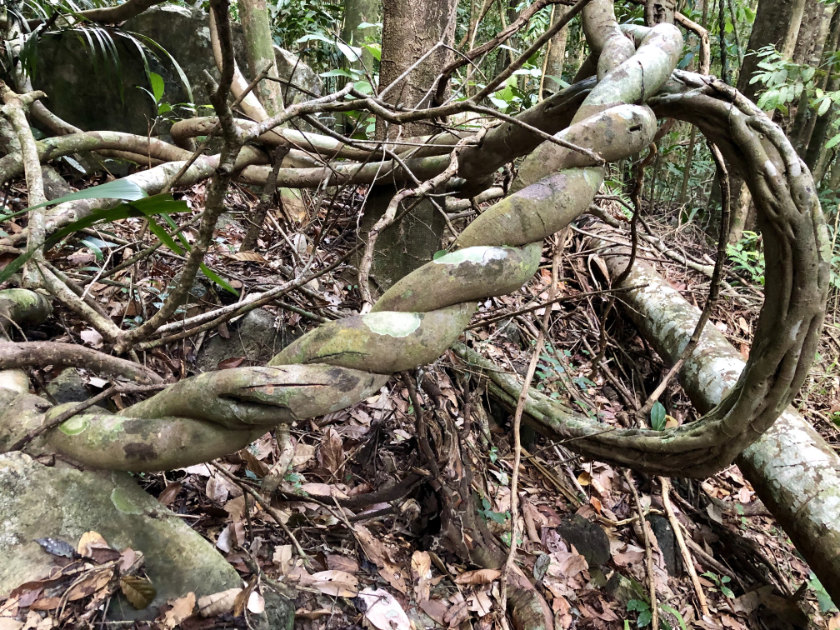 Above, from top: Sunset at Surama Lodge. At Surama Lodge. Surama mountain hike view. Boats wait at the Burro Burro River. Using a machete on the hike.
A vine spotted on the hike.
Above, from top: Sunset at Surama Lodge. At Surama Lodge. Surama mountain hike view. Boats wait at the Burro Burro River. Using a machete on the hike.
A vine spotted on the hike.
‘If you cook with this wood, the smoke will poison your food,’ he said. ‘But if you steam the bark and apply it as a poultice, it can kill bacteria.’
Lionel pointed out a traffic jam of panicked ants crossing the trail.
‘It looks like rain,’ he observed. ‘They’re heading to higher ground.’
We used vines to pull ourselves up the steeper parts of the mountain. Finally, we reached a 755-foot-high ledge where we enjoyed a view of yellow-blossomed treetops and the Pacaraima Mountains.
‘In May, this is a good spot to watch many macaws arriving from the Andes,’ Lionel said.
His knowledge, much of it passed down through his family, has served Lionel well—as a bow-hunter, a soldier, and a jungle survival instructor for Bushmasters tours. His most arduous adventure, though, may have been navigating modern London when he was recruited for a BBC reality show called Life Swap.
‘I had never left Guyana or been on a plane,’ Lionel recalled. ‘The producers flew me to England and told me to find the home of a guy named John—a civil servant who’d come to live in my village. It took me awhile. I got on a red and black train that looked like a giant coral snake. I went to John’s office and tried to use his computer. Meanwhile, John had to learn how to farm and fish and hunt. He had it much worse. But I was happy to come home.’
In the afternoon, we hiked to the Burro Burro River, a placid waterway that slithers through the forest. We climbed into a canoe for a short paddle. Hundred-foot vines dangled from branches far above. A pink-eared agouti watched us from a mud bank where crabs had excavated apartments. Lionel spotted a spectacled caiman masquerading as driftwood. ‘They’re small,’ he said, ‘but tasty.’ It was a culinary assessment one of his ancestors might have made while paddling this stream when these ancient trees were saplings.
The following day we drove an hour north to the Iwokrama Forest. At nearly one million acres, it’s one of the last pristine tropical forests in the world. One of its few human habitats, the Atta Rainforest Lodge, features a canopy walk that hangs almost 100 ft above the ground. Having crossed a couple of these swinging, mist-slicked tightropes in the past, I know I’m afraid of them. Nevertheless, I ascended, based on the claim that this sky-bridge gave an unrivalled view of creatures in the treetops. Maybe it does. I wouldn’t know. I never let my eyes drop below my white knuckles as I inched my way across its 505 ft of terror.
Back on land, we tried to catch up on the birds. We took a walk with a local guide named John. It soon became clear that Lionel did not approve of the younger guide’s high-tech techniques. When John pulled out a laser pen to point out a parrot, Lionel whispered, ‘That laser can blind the bird.’ When John played a mobile app recording to goad another bird into singing, Lionel clucked, ‘Those recordings tire out the birds. They sing when they should be sleeping.’
‘I see your point,’ I said. ‘But maybe birds should find out what it’s like to be rudely awakened by a bird.’
The rapture of nature, for the few
After returning to Georgetown, we boarded a flight to Guyana’s premier natural attraction. We’d been in the air for about an hour when the plane seemed to tilt to one side—as every passenger craned to see the wonder below.
With a drop of 251 m, Kaieteur Falls is five times the height of Niagara. There are taller waterfalls, but few can match Kaieteur for elevation plus aquatic volume. According to the World Waterfall Database, Kaieteur dumps, on average, 663 m³ of water per second.
Gaping at it from a cliff, I had to say the cascade lived up to the hype. The air around it tingled with negative ions. A rainbow sprang from its froth. Where the torrent tumbled over sandstone, its white tresses were streaked with henna.
The falls are five days over land from Georgetown, and the cost of flying is out of reach for most Guyanese. So our little group pretty much had the spectacle to ourselves. The absence of guardrails didn’t stop some of our male members from creeping to the precipice with their selfie sticks. Each posed triumphantly, as though he were Charles Barrington Brown, the first westerner to spy this giant faucet in 1870.
The park also held smaller marvels. We saw a grove of giant tank bromeliads, as well as one of the tiny golden rocket frogs that spend their entire lives swimming in the plant’s inner pond of rainwater. We also glimpsed one of Guyana’s avian celebrities—a male cock-of-the-rock, famous for his blazing orange Mohawk.
Returning to Georgetown, we fit in a cruise aboard one of the gaily painted commuter boats that ply the Demerara River. Afterward, Eamon and I stopped into a dockside shebeen called Pablo’s Chill Spot. One of the regulars asked if we were lost but, digging the reggae, we knew we were in the right place. Eamon’s hair again drew stares. One wobbly woman smoking a spliff dropped to her knees and asked, ‘Bless me, Jesus!’ My only begotten son laid his hand on her shoulder and bid her rise.
‘What’s your name?’ he asked.
‘Margaret,’ she said.
‘Eamon,’ he said, introducing himself.
Hearing it phonetically, she repeated, ‘Yes, Amen! Amen!’
The three of us toasted the tipsy epiphany with a few bottles of Banks.
Eamon and I also stopped by the Botanical Gardens. The zoo there had an otter habitat, with a grand portrait of Diane McTurk. Though it serves as a refuge for some rescued animals, the menagerie was a sad, neglected place. Manatees floated in a lagoon littered with plastic bags and bottles. A jaguar paced in circles in a cramped cage. Most haunting was the ocelot. It dozed in a rusted oil drum. The ocelot left me hoping that a few dollars from Guyana’s petroleum bonanza will trickle to this zoo. Or, better, that more Guyanese will have the means to see these creatures in the wild, under the forest canopy that, fingers crossed, will remain an oxygen tent for us all. •
Getting around Guyana
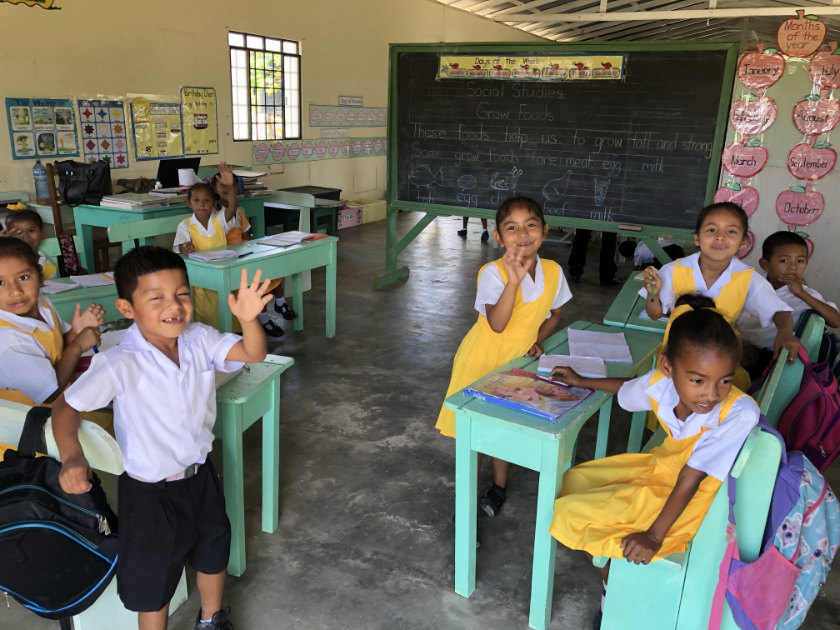
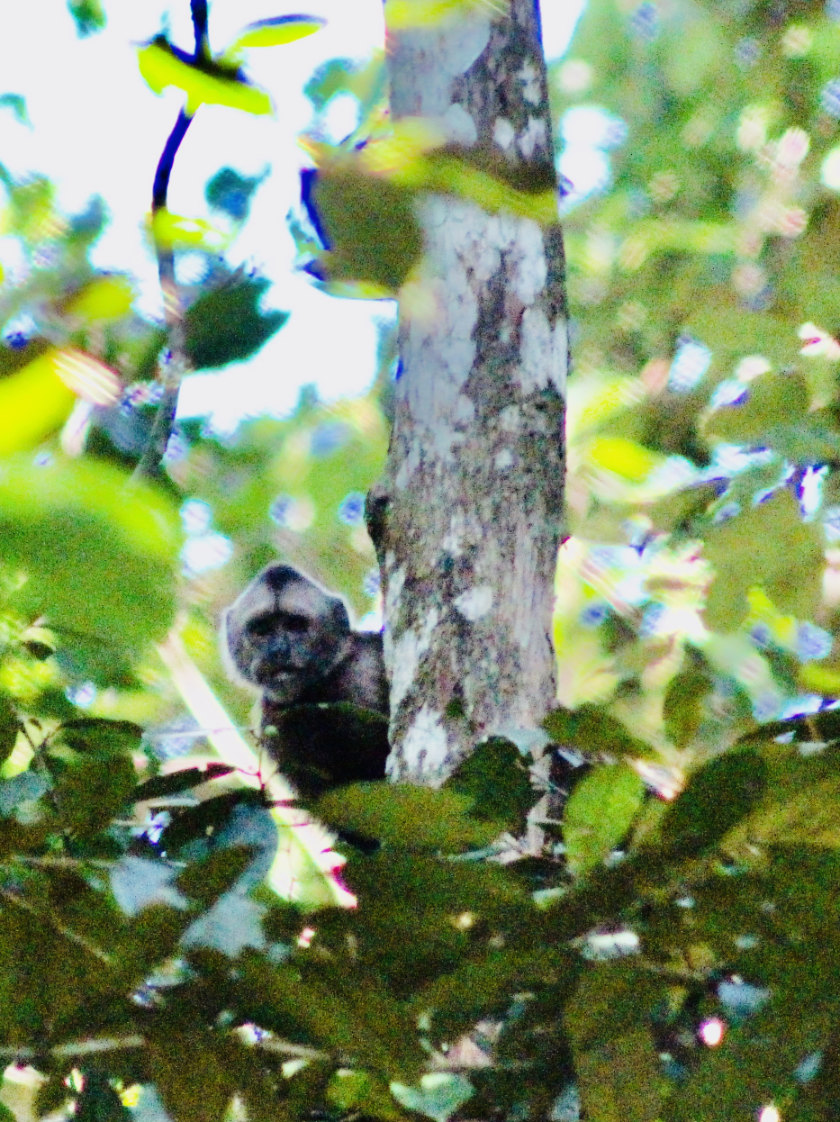
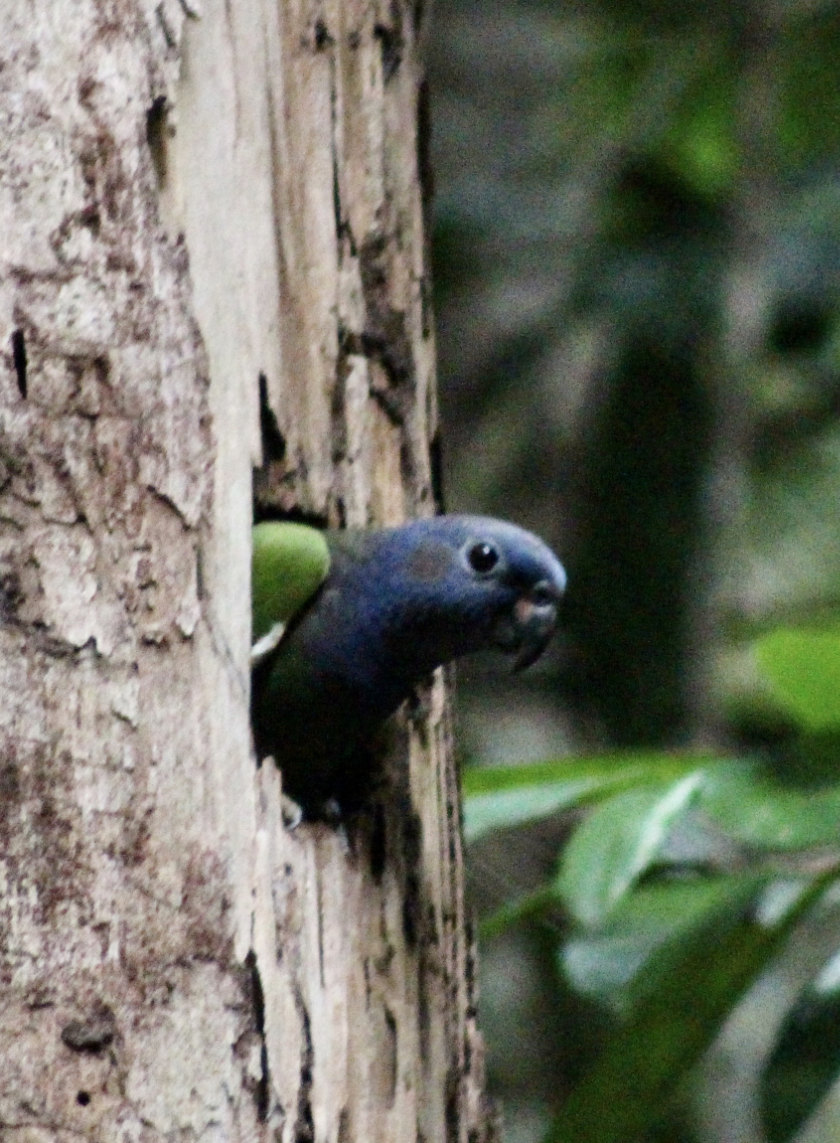
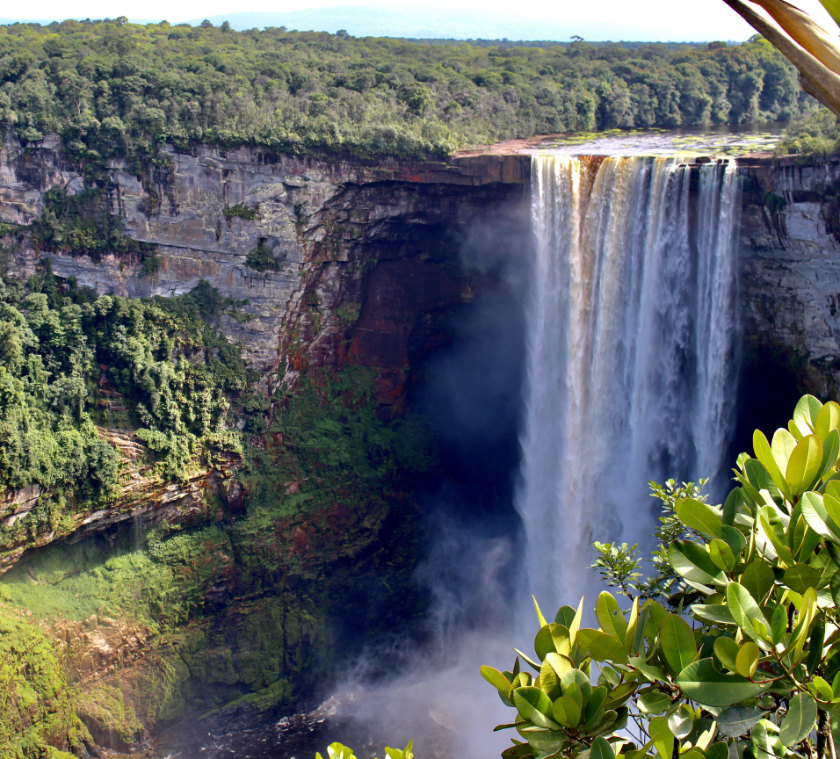
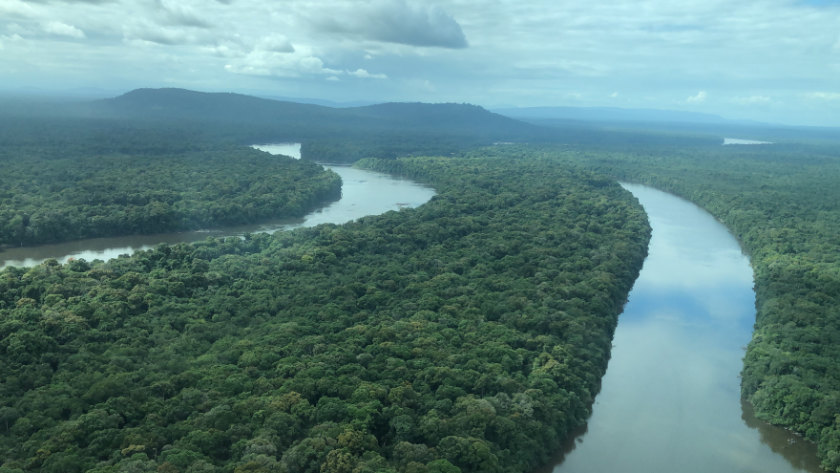 Above, from top: Macushi children at Surama School. A curious monkey at Surama. Parrot at Iwokrama.
A rainbow appeas at Kaieteur Falls. The vastness of the Essequibo River.
Above, from top: Macushi children at Surama School. A curious monkey at Surama. Parrot at Iwokrama.
A rainbow appeas at Kaieteur Falls. The vastness of the Essequibo River.
Related articles hand-picked by our editors
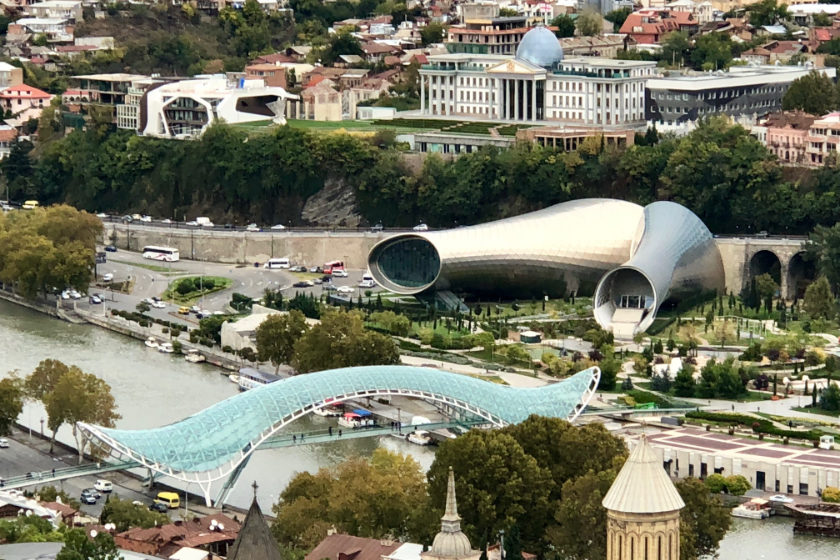
Some tangled vines in Georgia
George Rush weathers Georgian hospitality and stumbles into intrigue as he mixes with everyone from a Nobel-nominated poet to Trump-haunted plutocrats
Photographed by the author
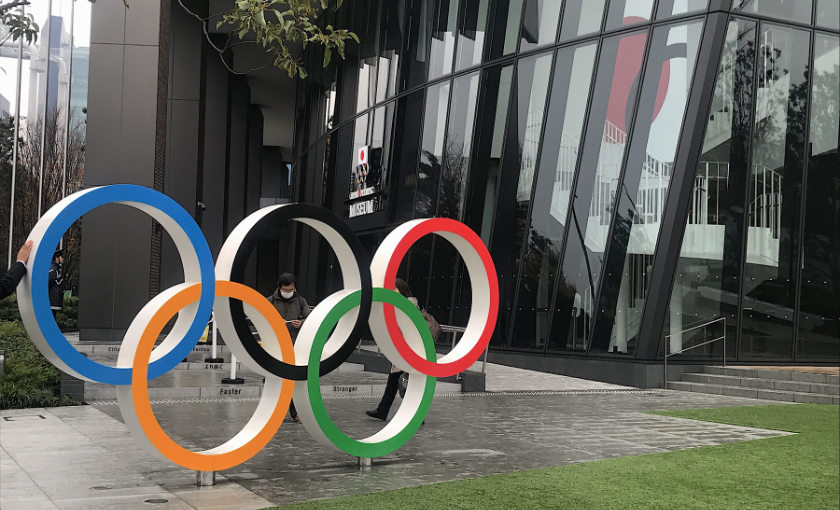
An Olympic guide to Tokyo
During this summer’s Olympic or Paralympic Games in Tokyo, competition will be fierce not just for event tickets, but also hotel rooms, airline tickets and other things you may take for granted. With careful planning and an open mind, Elyse Glickman reports that taking that leap of faith and heading to Japan this year will give you the best of many worlds—and not just those represented by the athletes competing in the Games in Tokyo
Photographed by the author and courtesy the hotels
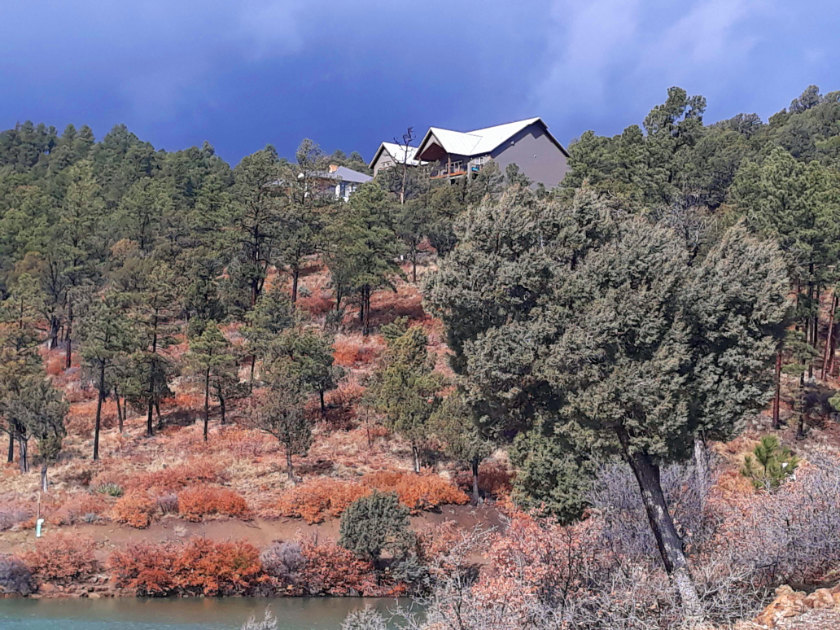
Take a walk on the wild side
Jody Miller heads for the hills and discovers Ruidoso, New Mexico’s irresistible allure
Photographed by the author
Advertisement
Copyright ©1997–2022 by JY&A Media, part of Jack Yan & Associates. All rights reserved. JY&A terms and conditions and privacy policy apply to viewing this site. All prices in US dollars except where indicated. Contact us here.